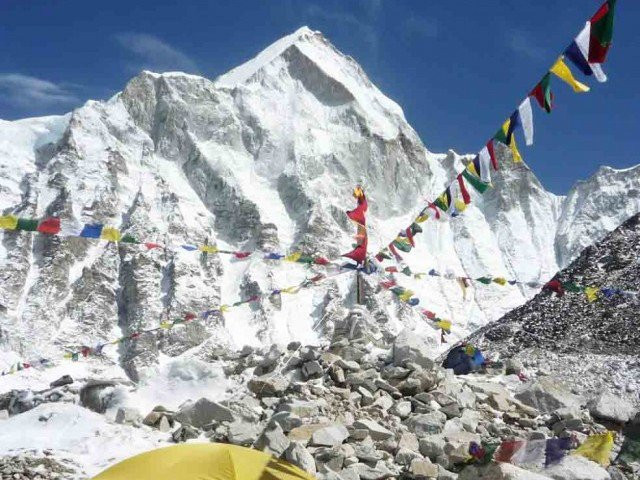Nepal may extend Everest climbing permits after quake
Hundreds of climbers had to abandon their attempts when an avalanche struck Everest base camp

A general view from Everest Base Camp towards the summit of Mount Everest in Nepal. PHOTO: AFP
Hundreds of climbers had to abandon their attempts when an avalanche struck Everest base camp, killing 18 people and marking a second year with virtually no summits after the deaths of 16 Nepalese guides in 2014 sparked a shutdown of the world's highest peak.
The twin quakes that struck the Himalayan nation on April 25 and May 12 killed more than 8,600 people and destroyed the popular Langtang trekking route, raising fears for the immediate future of the tourism industry.
Read: Nepal’s earthquake caused Mount Everest to shrink: scientists
"We may extend Everest permits for another year, we would like to take a decision that will help climbers as well as promote our tourism industry," tourism department chief, Tulsi Gautam, told AFP.
"Although no decision has been taken yet, no one wants to be negative about (extensions)... we have to take the perspective of climbers and tourism operators into account," Gautam said.
The government, following the 2014 shutdown, had offered a five-year extension to 334 climbers, many of whom returned to Everest in April, days before an avalanche wiped out part of base camp in the worst disaster to hit the 8,848-metre (29,035-foot) high peak.
Read: Second chances: Pakistani mountaineer survives Nepal earthquake
Mountaineering is a huge revenue earner for the impoverished country, home to eight of the world's 14 peaks over 8,000 metres, with Everest alone attracting hundreds of climbers during the April-May spring season, when weather conditions are deemed ideal for ascents.



1701351241-1/Afghan-refugees-(3)1701351241-1-208x130.webp)















COMMENTS
Comments are moderated and generally will be posted if they are on-topic and not abusive.
For more information, please see our Comments FAQ